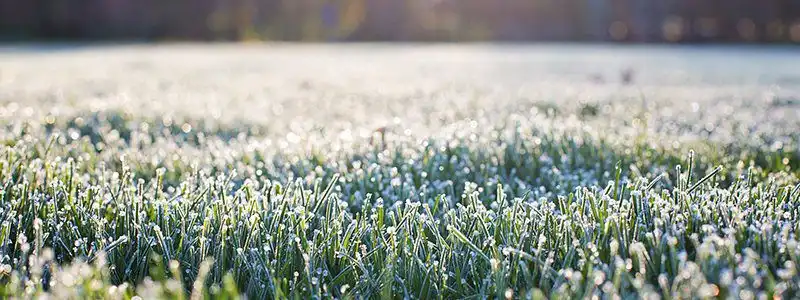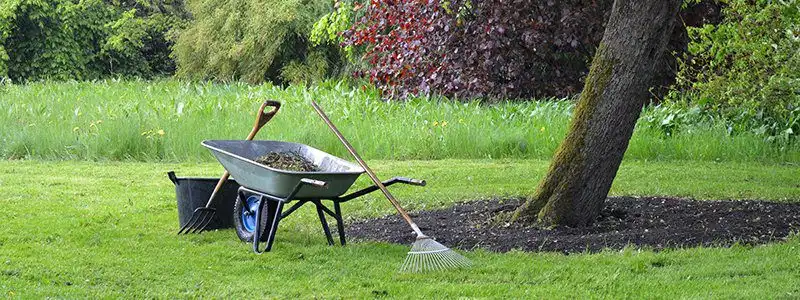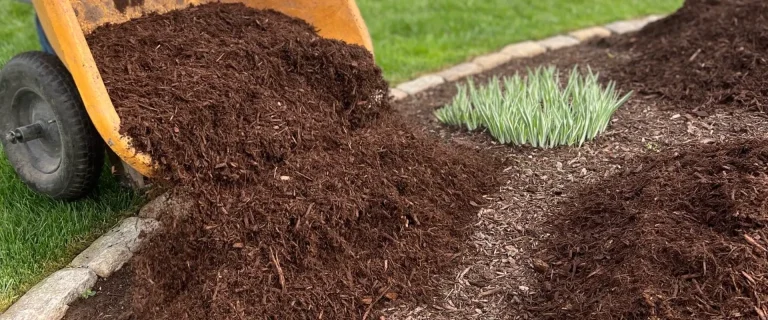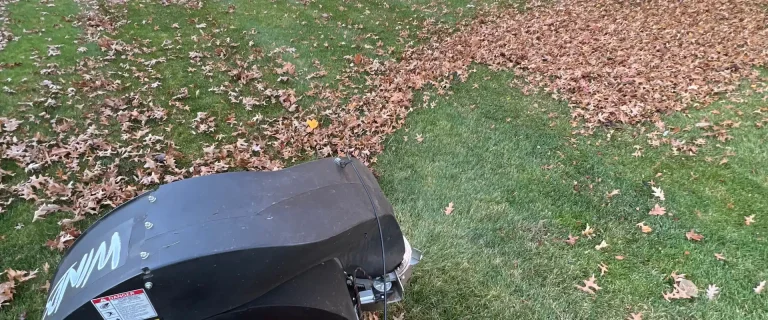How to Prepare My Lawn for Winter

The changing leaves and crisp weather make us all excited for fall, but it also means it’s time to prep your lawn for winter. During the summer months, lawns and gardens protect themselves from the heat and sun rays by going into a resting period. Unlike most things that go dormant in the winter, restoring your lawn or garden is best done in the fall. Here are some tips to prepare and winterize your plant life:

Fall and Winter Lawn Care
While you get a break from worrying about lawn care during much of the winter, there are some necessary steps to prepare your beautiful grass before the cold sets in. Before looking up “how to prepare my lawn for winter,” you should first search for “how to prepare my lawn for fall.”
If you maintain your lawn up to and during the fall season, most of the hard work for winter will already be done.
That being said, let’s discuss fall lawn care.
How To Prepare My Lawn for Fall
The easiest way to do this is to think of the whole summer as your opportunity to prepare for fall. But, there are a few things aside from regular lawn maintenance that should be wrapped up before the leaves start to change.
- Complete any major landscaping projects: Although many of these can be done throughout the winter, it’s often easier to do during the warmer months – and gives you more immediate satisfaction!
Mow regularly: Remember that your grass doesn’t care that the leaves have changed – it’s going to continue to grow until it freezes over.
Don’t forget to water: You might be experiencing more rain and moisture as fall kicks in, but keep an eye on your grass to make sure it’s getting as much as it needs.

How To Prepare My Lawn for Winter
There are a lot of factors that go into fall and winter lawn care, so use this checklist to make sure you do all the necessary preparations:
Start Early
Planning ahead is beneficial in the winterization process, as it’s imperative to start early in the fall. Your lawn will be able to absorb more nutrients, making spring brighter and happier. Waiting until late fall can be tough because nutrients may be washed away before being absorbed, as your lawn is anticipating turning dormant for the winter.
Rake Leaves & Debris
When leaves are left in your lawn or garden, they can cause dry and dead spots. Cleaning leaves, branches, and dead plants can help with even growth come spring.
Pull Weeds
Did you know that weeds birth seeds in the fall? Pull weeds before it gets too cold to take preventative action against unhealthy lawns and gardens.
Check pH Levels
Before applying any chemicals or treatments on your lawn or garden, check the pH levels in the soil first! This will help you determine your lawn’s acidity level to determine which areas may need more help than others.
Aerate Your Lawn or Garden
Aerating helps to open the soil, so water and air have more direct access to the roots. Permitting the flow of nutrients in this matter achieves longer lasting results. High traffic areas during the summer benefit greatly from a bit of aeration.
Choose a Good Winter Lawn Fertilizer
Most winterizers contain the same ingredients as lawn food, both necessary for maintaining a healthy lawn. However, it is important to pay attention to the ingredients ratio before you buy! Your winter lawn fertilizer should use less nitrogen and more phosphorous and potassium, to help strengthen roots during the colder months.
How to Prepare My Lawn for Overseeding
One activity you should absolutely consider doing in the fall is overseeding. If you don’t know what this means, it’s basically adding grass seed to strengthen up your lawn where it needs it – without removing everything and starting from scratch.
So, how do you prepare your land for overseeding? You’re already on the right track because the fall is the best time to do it. Basically, you’ll want to follow these steps:
- Mow your grass to be on the shorter side
- Clear any debris (such as leaves) and pull any weeds
- User a spreader to spread your chosen seed type on a moist lawn (not completely dry, but not right after watering)
- Use an appropriate fertilizer and continue to water your lawn until the new grass looks healthy

Should I Mulch My Lawn Before Winter
“Should I mulch my lawn before winter” is another question we hear time and again, and the answer depends on what you have growing in your lawn. Generally speaking, you should think of mulch as a blanket to insulate the roots of shrubs, trees, and other similar plants throughout the winter.
To continue with the blanket analogy, mulch isn’t the only option you have for this insulation. There are synthetic materials that can be wrapped around plants, or you can use any other type of organic matter to do the job (think of those big bags of leaves you just raked up!). The ideal method varies depending on the type of plant, so we recommend contacting an expert if you’re unsure about your particular situation.
On the other hand, you don’t want to cover your grassy areas with mulch. Just like you, you grass still needs access to fresh air and sunshine to stay healthy throughout the winter.
Get Help With Fall and Winter Lawn Care
To go back to your original question of “how to prepare my lawn for winter,” hopefully this gives you all the information you need.
Need assistance preparing your lawn or garden for winter? Contact Scenic Landscaping & Property Maintenance LLC! We proudly provide service to clients throughout the Rocky Hill, CT area.











